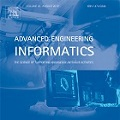Gait recognition is a biometric technology that identifies individuals in a video sequence by analysing their style of walking or limb movement. However, this identification is generally sensitive to appearance changes and conventional feature descriptors such as Gait Energy Image (GEI) lose some of the dynamic information in the gait sequence. Active Energy Image (AEI) focuses more on dynamic motion changes than GEI and is more suited to deal with appearance changes. We propose a new approach, which allows recognizing people by analysing the dynamic motion variations and identifying people without using a database of predicted changes. In the proposed method, the active energy image is calculated by averaging the difference frames of the silhouette sequence and divided into multiple segments. Affine moment invariants are computed as gait features for each section. Next, matching weights are calculated based on the similarity between extracted features and those in the database. Finally, the subject is identified by the weighted combination of similarities in all segments. The CASIA-B Gait Database is used as the principal dataset for the experimental analysis.
翻译:Gait 识别是一种生物鉴别技术,通过分析行走或肢体运动的风格,在视频序列中识别个人。然而,这种识别一般对外观变化和传统特征描述符(如Gait Energy image (GEI)) 等常规特征描述符(如Gait Energy image (GEI) ) 失去动作序列中的一些动态信息。活跃能源图像(AEI) 更侧重于动态运动变化,更适合处理外观变化。我们提出了一种新的方法,通过分析动态运动变异和识别人而不使用预测变化数据库来识别人,从而识别人。在拟议方法中,主动能源图像的计算方法是平均单流序列的差异框架,并将其分为多个部分。每个部分的轮廓特征被计算为偏差时间。接下来,根据提取的特征和数据库中的特征之间的相似性来计算相应的重量。最后,通过所有部分的相近点的加权组合来确定主题。 CASIA-B Gait数据库被用作实验性分析的主要数据集。




